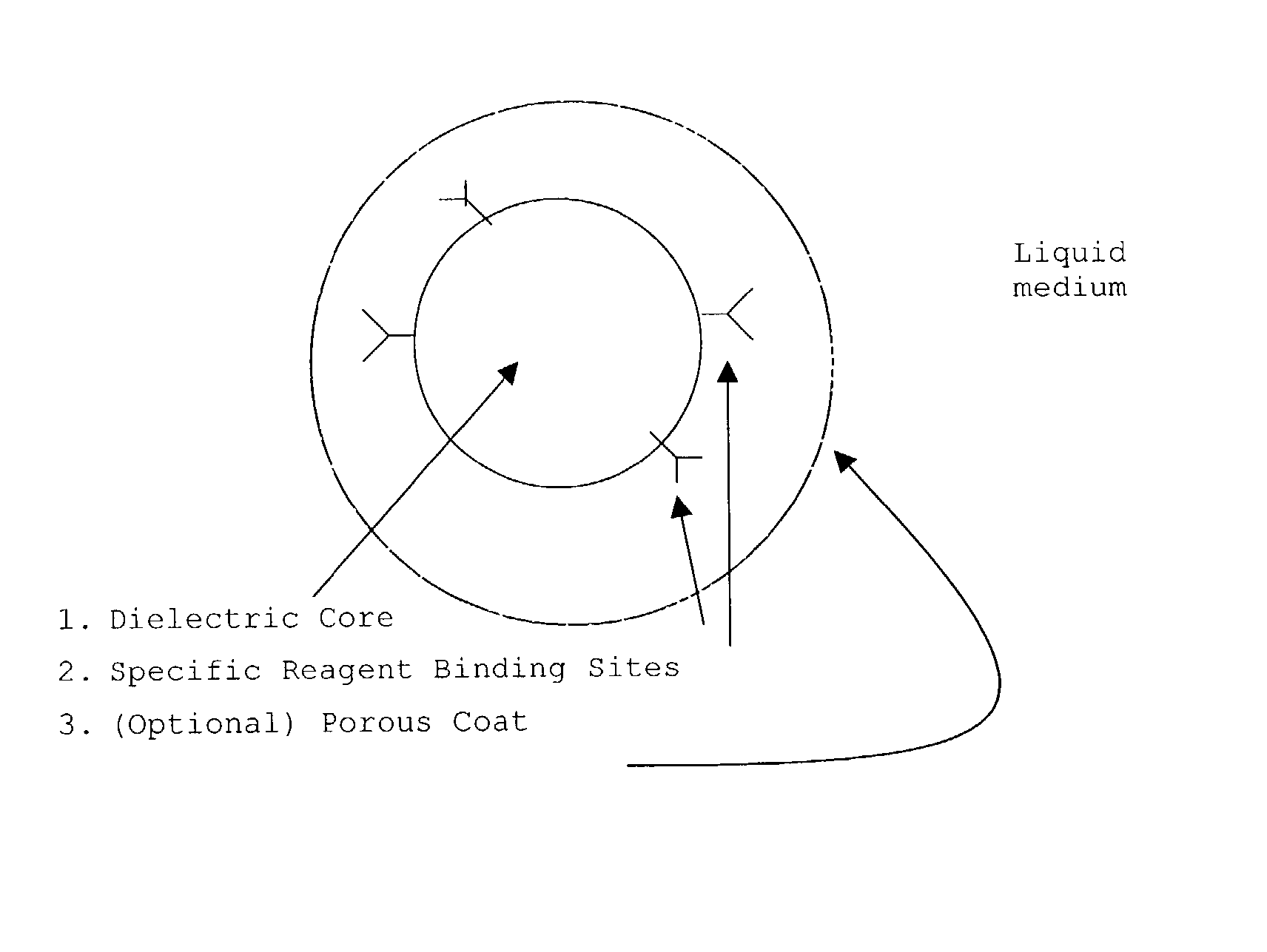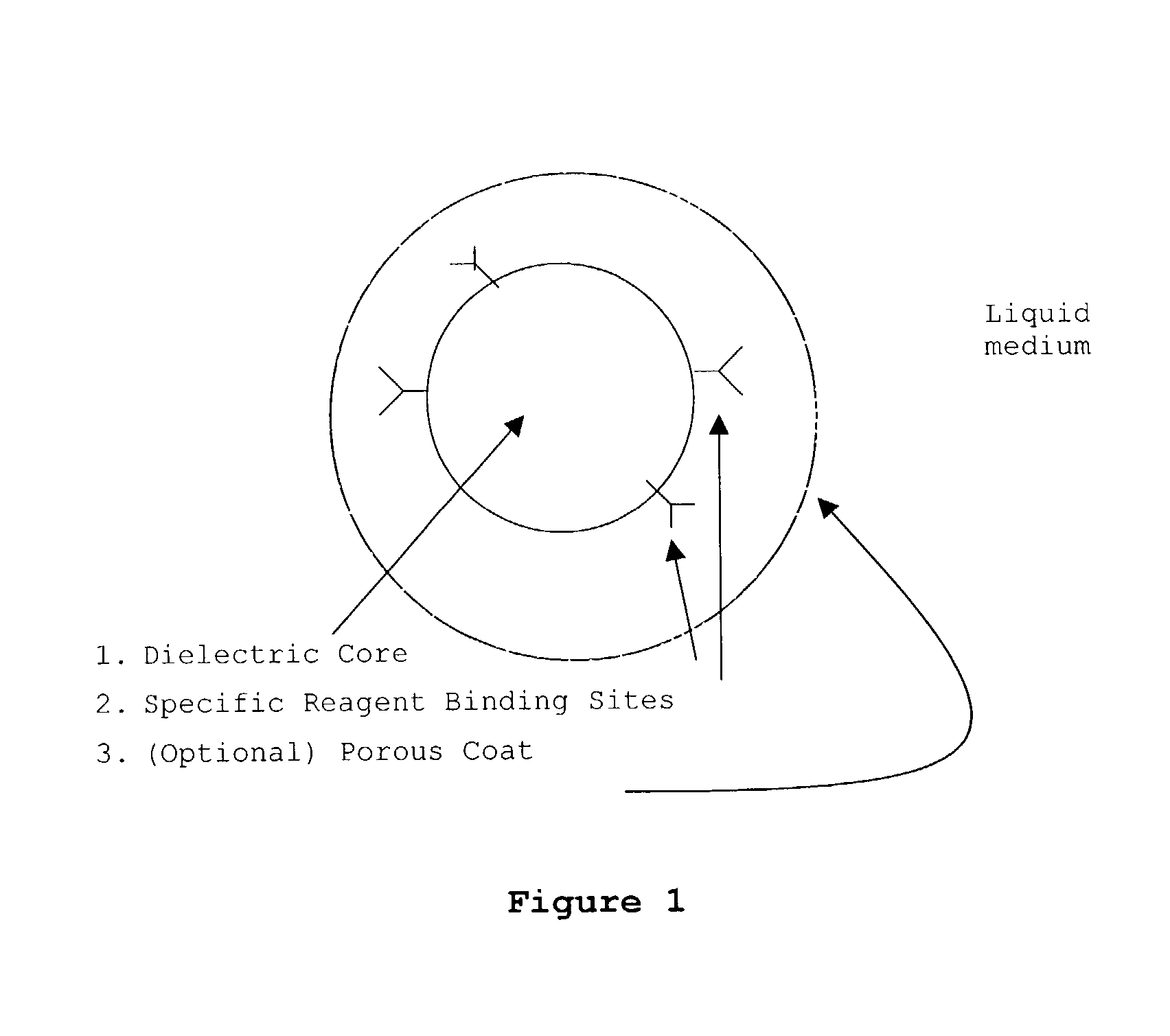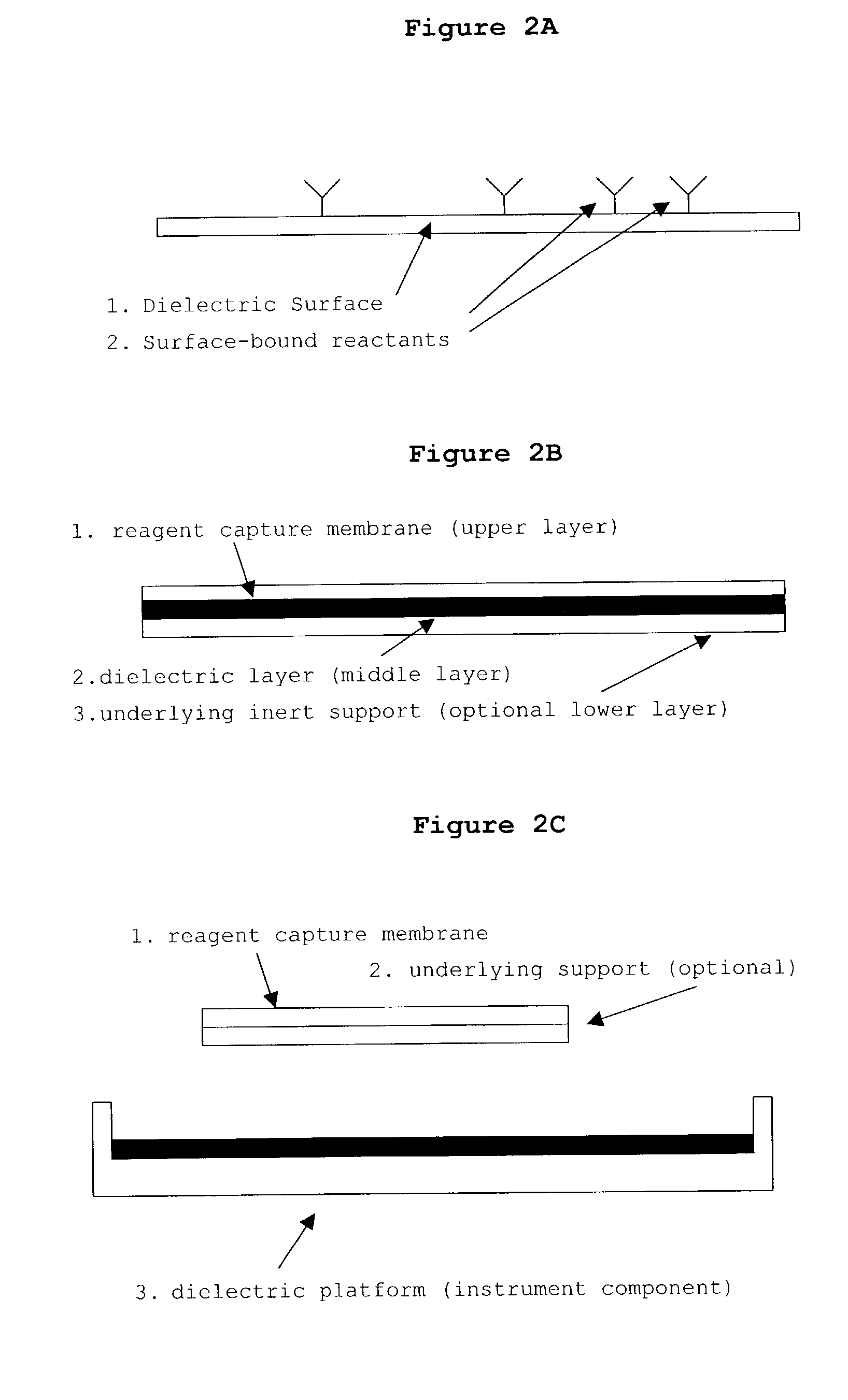Directed microwave chemistry
a technology of directed microwave and chemistry, which is applied in the direction of immobilised enzymes, hydrogen, packaged goods, etc., can solve the problems of short shelf life of proteins, natural proteins are susceptible to degradation, and proteins are not particularly stable molecules, and achieve superior results
- Summary
- Abstract
- Description
- Claims
- Application Information
AI Technical Summary
Benefits of technology
Problems solved by technology
Method used
Image
Examples
example 1
Microwaves Preferentially Directed to Carbon Particles Suspended in Water
[0225] An experiment was carried out to test whether carbon particles in water would heat substantially faster than the water they are suspended in. The experiment involved a conventional kitchen microwave oven (Panasonic NN-S949, 1100 W output, 2.45 GHZ). Carbon is known to be lossier than water at the emitting frequency. Thus, a suspension of carbon (approx. 200 mg) in water (approx. 100 mL) should heat faster than neat water. Water (100 mL) was heated in the absence or presence of ground carbon (charcoal briquettes (Super G, Landover, Md.) were ground to a powder using a mortar and pestle). After 1.0 minute of microwaving, the carbon-containing water was nine degrees warmer (83.degree. F.) than water alone (74.degree. F.). (The heated carbon transferred its heat to water, which I measured). The experiment was repeated and similar results (nine degrees hotter in the presence of carbon) were found. This shows ...
example 2
Microwaves Preferentially Directed to Hydrated Clay
[0226] Three experiments were carried out to test whether hydrated clay would heat substantially faster than the water. A report by Buffler & Risman (1996) indicated that clay would heat faster than water, especially at 915 MHz. Clay is moldable and could be used as a core dielectric in beads or as a flat surface in cartridges. To test this hypothesis, a 2450 MHz emitting microwave oven was employed. Based on the report of Buffler & Risman, any positive result in these (2450 MHz) experiments would indicate that much better results could be obtained at 915 MHz.
[0227] Experiment 1: Approximately 100 mL spring water were heated in a plastic microwavable cup for 60 seconds in the same microwave as described in Example 1. The temperature rose from 25.0.degree. C. to 92.5.degree. C. The same volume of water, but containing approximately 200 mg clay (Bentonite 200 clay, supplied as dry powder from Great Lakes Clay and Supply Co., Carpenter...
experiment 3
[0229] Approximately 50 mL room temperature spring water was heated in a plastic microwavable cup for 30 seconds in the same microwave. The temperature rose to 68.0.degree. C. The same volume of room temperature hydrated Bentonite 200 clay (minimal liquid water) was also heated in the microwave. The temperature rose to 84.0.degree. C. This experiment verifies that clay heats faster than water when exposed to 2450 MHz (1100 W) microwave irradiation. It also indicates that the increase in temperature of the clay-containing water in Experiments 1 and 2 was due to (minor) heat transfer form the substantially hotter clay to the cooler water. Microwave heating was directed to clay in the presence of water.
PUM
| Property | Measurement | Unit |
|---|---|---|
| wavelength | aaaaa | aaaaa |
| frequency | aaaaa | aaaaa |
| wavelengths | aaaaa | aaaaa |
Abstract
Description
Claims
Application Information
 Login to View More
Login to View More - R&D
- Intellectual Property
- Life Sciences
- Materials
- Tech Scout
- Unparalleled Data Quality
- Higher Quality Content
- 60% Fewer Hallucinations
Browse by: Latest US Patents, China's latest patents, Technical Efficacy Thesaurus, Application Domain, Technology Topic, Popular Technical Reports.
© 2025 PatSnap. All rights reserved.Legal|Privacy policy|Modern Slavery Act Transparency Statement|Sitemap|About US| Contact US: help@patsnap.com



